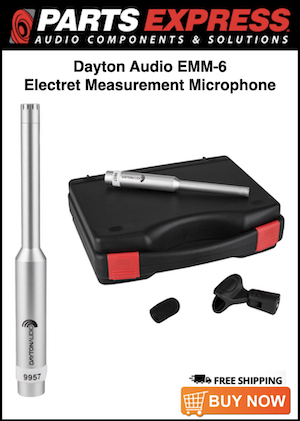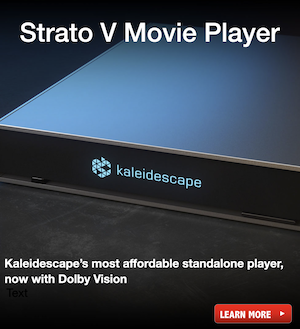Nordo
Member
Thread Starter
- Joined
- Oct 7, 2019
- Posts
- 137
More
- Preamp, Processor or Receiver
- Denon AVR X1500H
- Additional Amp
- Sub amp - Behringer EP2500
- Universal / Blu-ray / CD Player
- Panasoic BD35
- Front Speakers
- DIY
- Center Channel Speaker
- DIY
- Surround Speakers
- DIY
- Surround Back Speakers
- DIY
- Front Height Speakers
- -
- Rear Height Speakers
- -
- Subwoofers
- Four 15" infinite baffle drivers
- Other Speakers
- HTPC (windows 10 with Kodi)
- Screen
- Matt white "blockout" curtain liner
- Video Display Device
- Epson EMP-TW2000 projector
Hi
I've had a dedicated Home Theatre now for over 20 years.
Designed everything myself, from room dimensions, to speaker & sub design and build, through to acoustic treatment, etc.
I used REW extensively, and still rely on it today.
We are now down-sizing our home, and I'm going to lose my beautiful home theatre.
However the house we are moving into does have a small "media room". But it's just a basic bare room with drywall on timber framed walls and ceiling.
The room dimensions are 4m (13'1") x 3.3m (10"10") x 2.5m (8'3") high.
But my limited knowledge has faded over the years and I need some guidance in the initial testing of the room using REW.
In particular, I need a tutorial on Impulse and RT60 testing and understanding the results.
If anyone can point me some good tutorials, that would be wonderful.
If a Moderator (or anyone) thinks this post would be better of in another forum (REW?), please let me know.
EDIT - Actually I've found some in-depth articles that John Mulcahy has written on Impulse and RT60 graphs.
John normally writes most articles in simple layman's terms, so I'll sink my teeth in his articles and see if I can retain any of the information.
.
I've had a dedicated Home Theatre now for over 20 years.
Designed everything myself, from room dimensions, to speaker & sub design and build, through to acoustic treatment, etc.
I used REW extensively, and still rely on it today.
We are now down-sizing our home, and I'm going to lose my beautiful home theatre.
However the house we are moving into does have a small "media room". But it's just a basic bare room with drywall on timber framed walls and ceiling.
The room dimensions are 4m (13'1") x 3.3m (10"10") x 2.5m (8'3") high.
But my limited knowledge has faded over the years and I need some guidance in the initial testing of the room using REW.
In particular, I need a tutorial on Impulse and RT60 testing and understanding the results.
If anyone can point me some good tutorials, that would be wonderful.
If a Moderator (or anyone) thinks this post would be better of in another forum (REW?), please let me know.

EDIT - Actually I've found some in-depth articles that John Mulcahy has written on Impulse and RT60 graphs.
John normally writes most articles in simple layman's terms, so I'll sink my teeth in his articles and see if I can retain any of the information.
.
Last edited:












